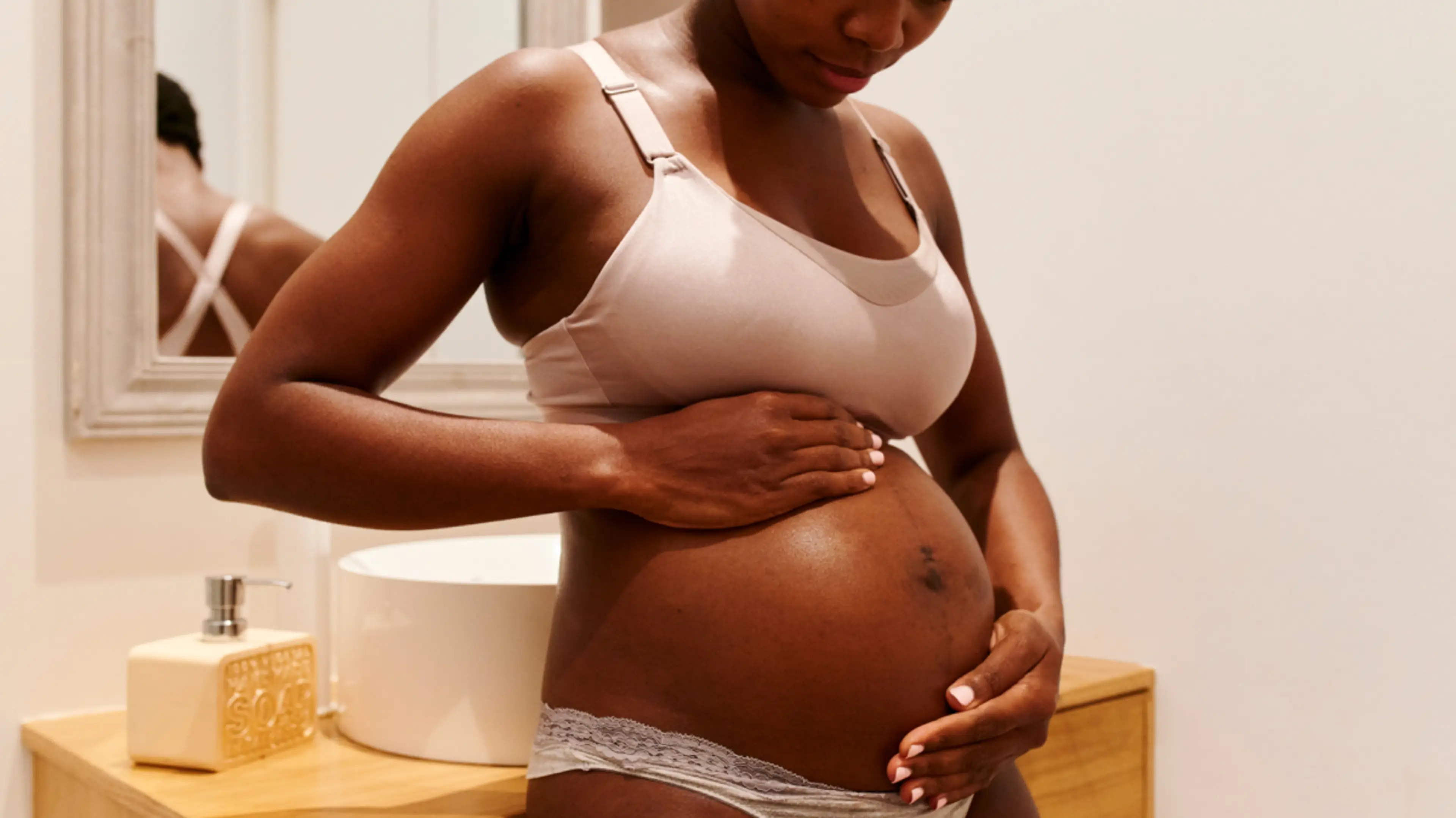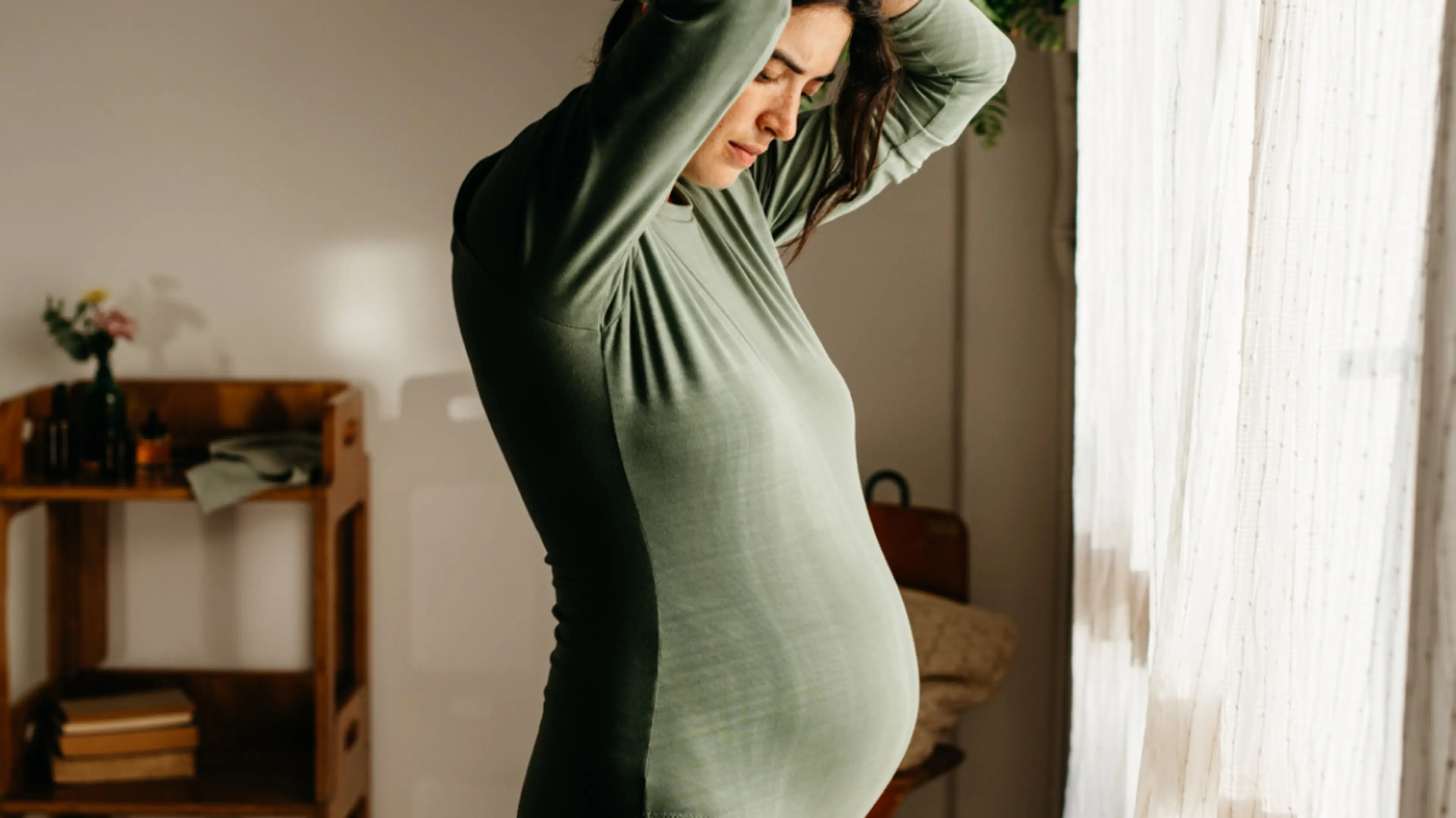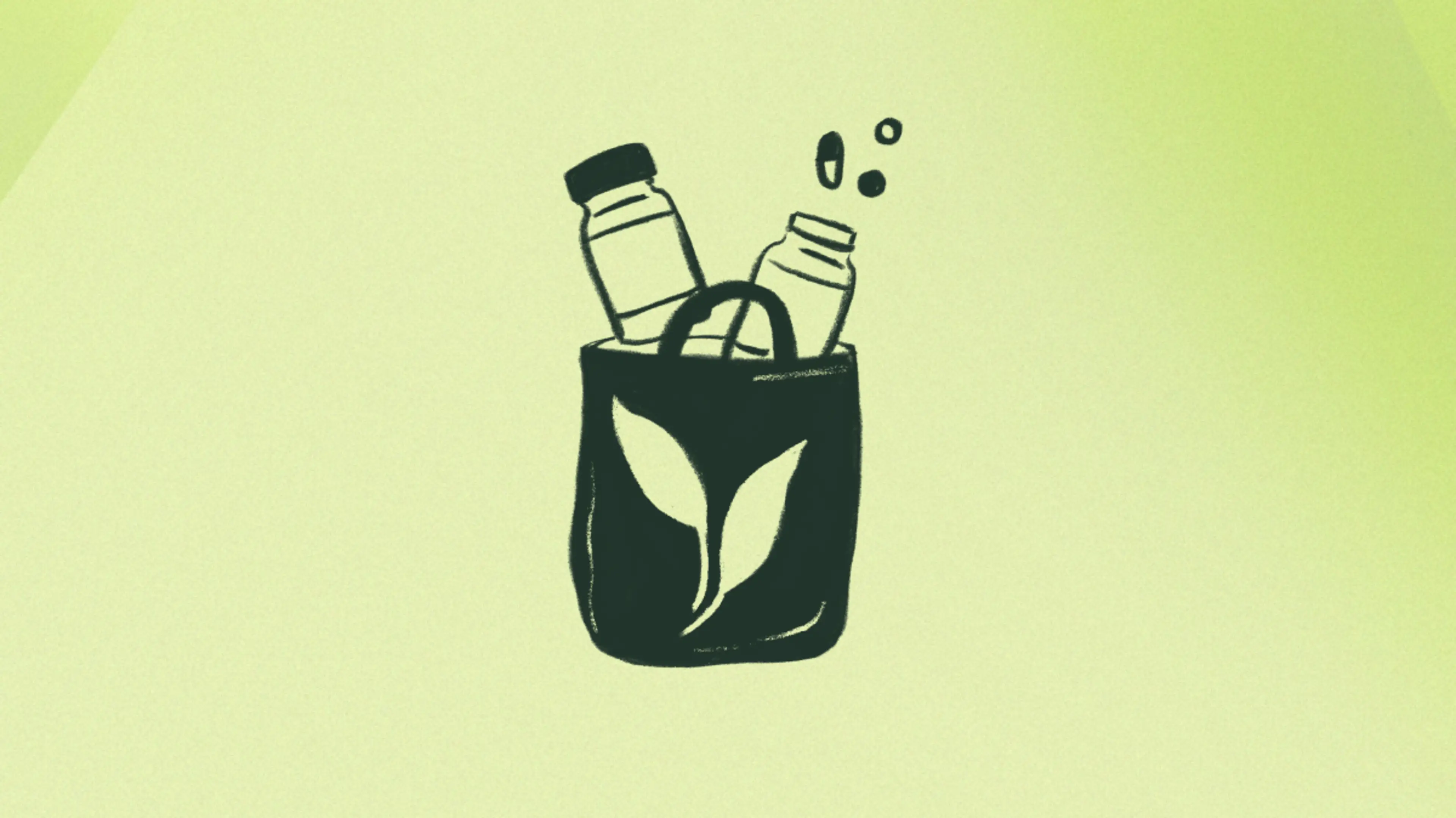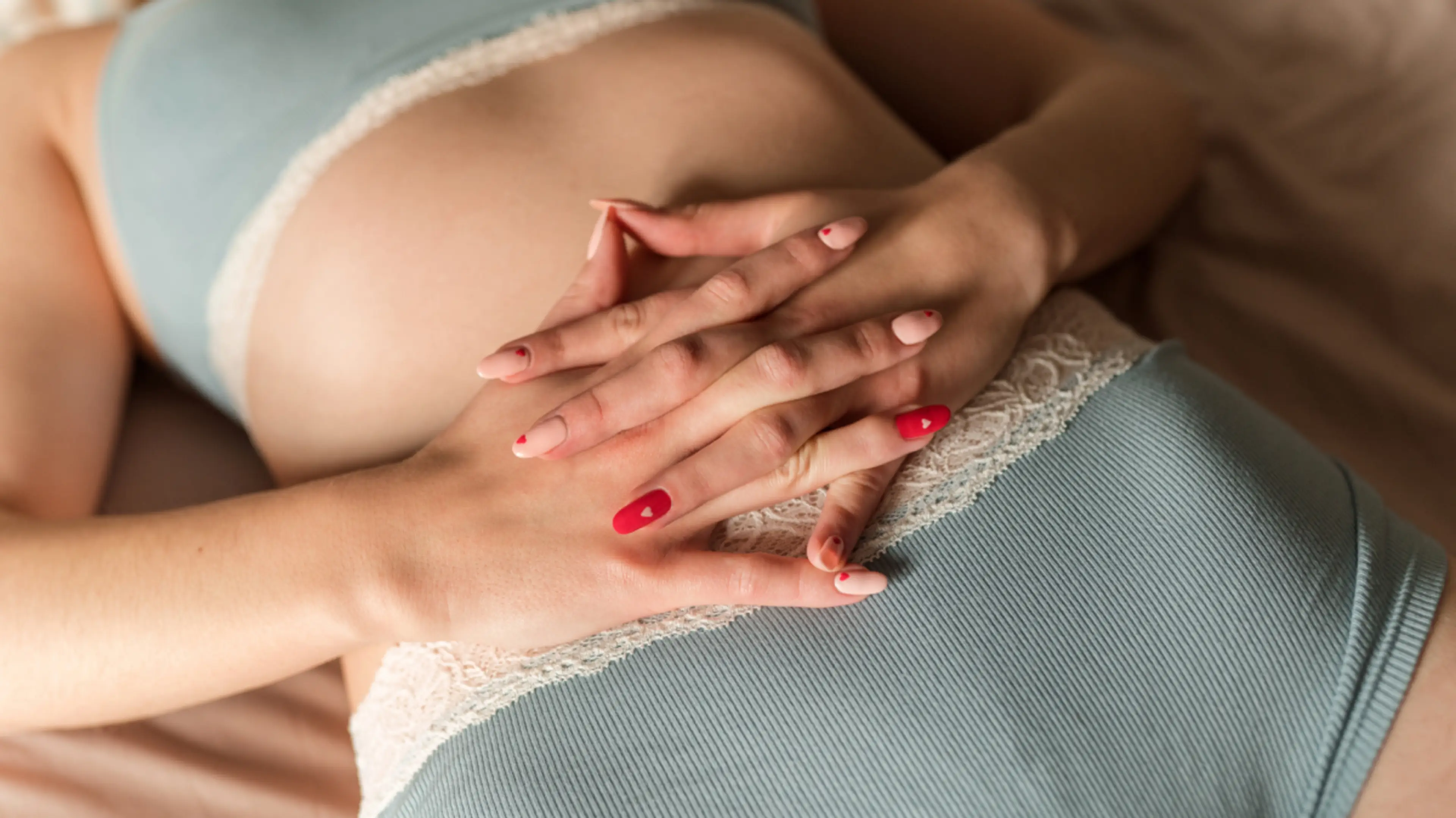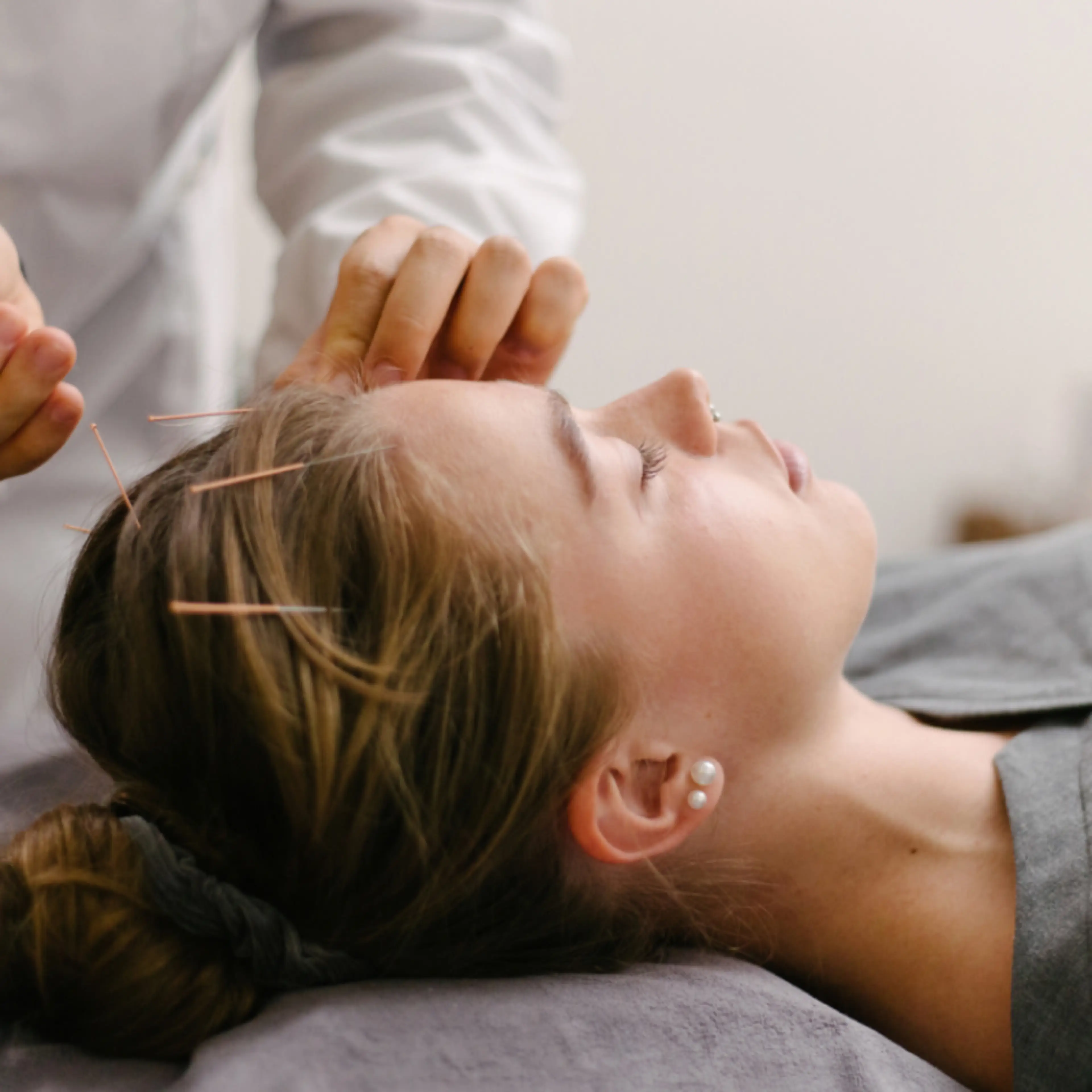Some pregnant people enjoy radiant, glowing skin—maybe even the best skin of their lives. Others, however, find themselves wondering what’s behind strange new bumps, an influx of chin hairs or itchiness that wakes them up at night. And some deal with acne for the first time since their teen years.
Sound familiar? Skin changes are very common during pregnancy (as are changes in hair and nails), so take comfort that whatever you’re dealing with is probably normal. Most issues clear up once the baby arrives, but if you want to treat it sooner, you have options.
Here, two dermatologists weigh in on eight common skin issues pregnancy can cause and what you can do about them.
Acne During Pregnancy
Maybe you thought you left breakouts back in high school, but the hormonal changes that happen during pregnancy can mess with your complexion. “During pregnancy, your levels of cortisol, a stress hormone, are about three times higher1 than when you’re not pregnant,” says Dr. Jenny Murase, assistant clinical professor of dermatology at the University of California San Francisco.
Cortisol causes the tiny glands in your skin known as sebaceous glands to produce more oil, which can lead to clogs and then pimples. Higher than normal levels of progesterone2 , which you need to maintain a pregnancy, may also be a factor.
What you can do: Safe acne treatments during pregnancy include topical ointments with azelaic acid3 , which kills acne-causing bacteria. Some are available over the counter, but many contain extra active ingredients that you should run by your ob-gyn or a dermatologist. Steer clear of retinoids, such as retinol or tretinoin, if you’re pregnant. Research4 has shown these drugs, at least when taken orally, can cause serious birth defects. Ask your dermatologist for a prescription for Finacea gel5 , another name for azelaic acid, or clindamycin6 , a topical antibiotic.
As for all the over-the-counter (OTC) acne cleansers and on-the-spot treatments you see at the drugstore, they often contain benzoyl peroxide, which is okay, as long as you use these products sparingly, says Dr. Angela Lamb7 , associate professor of dermatology at Icahn School of Medicine at Mount Sinai in New York City. “A little drop of something you put on your skin twice a day doesn’t really absorb into your skin enough to get into your bloodstream,” she says.
Dry, Itchy Patches During Pregnancy
Dry, itchy and/or red patches may signal what doctors refer to as atopic eruption of pregnancy (AEP). Sometimes called pregnancy eczema, AEP includes eczema8 and a few other normal, harmless skin conditions that often pop up during pregnancy. Eczema is the most common, but some people end up with prurigo9 , bumps that cover a large area of the body, like your stomach, arms and/or legs.
AEP, but with eczema, it likely has to do with hormonal changes that impact the sensitivity of your skin’s barrier, along with shifts in the immune system that happen during pregnancy. “It just depends how your skin responds to these changes,” Dr. Lamb says. “Some people find their existing eczema gets better during pregnancy, while others see it flare or develop this problem for the first time.”
What you can do: Apply lotion three to four times a day, Dr. Lamb suggests. Look for fragrance-free products (fragrance can be irritating) with super-hydrating ingredients like mineral oil, petroleum jelly or ceramides. Gentle cleansers (again, skip the fragrance) that are designed for sensitive skin can also help. If that feels like way too much to think about while you’re in the Target aisle, check out the National Eczema Association’s searchable directory10 of eczema-friendly products before you shop.
If your eczema is really bad, it’s okay to apply 1% cortisone cream to the irritated areas, Dr. Lamb says. Prurigo might also respond to cortisone ointment, or you can try a small amount of an acne cream with benzoyl peroxide.
A Bumpy Rash in and Around Stretch Marks
This is the non-scientific way to describe what doctors call polymorphus eruption of pregnancy (PEP), formerly known as pruritic urticarial papules and plaques of pregnancy (PUPPP). PEP is a hive-like rash that starts in stretch marks on the belly but often migrates further (to your butt, thighs and sometimes arms and legs). Unlike AEP, which tends to show up early in pregnancy, PEP occurs in the third trimester11 .
The exact cause is a mystery, but experts do know that some people are more prone to PEP, including those carrying twins and first-timers who rapidly gain weight. “We think it’s related to the physical stretching of skin, and maybe changes in the immune system that happen during pregnancy,” Dr. Murase says.
What you can do: Take cool baths and wear lightweight cotton clothing—which helps keep you cool and lets your skin breathe—to help relieve the discomfort. Topical steroids12 (aka cortisone cream) may also help, but if your skin isn’t improving and it’s driving you nuts, ask a dermatologist about a prescription-strength cortisone ointment. The good news: PEP usually disappears shortly after you deliver.
Discoloration or Dark Spots During Pregnancy
Some people get a tan or blotchy “mask of pregnancy” on their face, which is known as melasma13 . Others develop linea nigra14 , which is a dark line that runs from the bottom of the sternum all the way down to the pubic bone. And yet others notice darkened spots that span a large portion of their body.
What’s to blame? Hormones of course. “Estrogen stimulates the production of melanocyte-stimulating hormone,” which makes you produce more of the cells that give your skin pigment, Dr. Murase explains.
When it comes to melasma, sun exposure almost always makes it worse, says Dr. Lamb, and vigilantly applying sunscreen helps a lot. The best pregnancy-safe sunscreens check three boxes:
A sun protection factor (SPF) of 30 or higher
“Broad-spectrum” is on the label, indicating that it protects against both UVA and UVB rays
It includes a physical blocker like zinc or titanium dioxide, which are safer choices during pregnancy compared to15 chemical-based sunscreens with ingredients like avobenzone, oxybenzone16 or homosalate
What you can do: If hyperpigmentation (a.k.a. dark spots) is bothering you, ask a dermatologist about a topical treatment with azelaic acid, like Finacea. You can also try OTC brightening creams that use vitamin C (ascorbic acid) as the active ingredient, Dr. Lamb says. If the darkness doesn’t clear up within a few weeks after birth and it’s bothering you, ask your doctor if you’re a good candidate for a chemical peel or laser treatment.
Stretch Marks During Pregnancy
Maybe the best-known pregnancy-related skin issue, these red or purplish lines, which doctors call striae, often show up on the stomach. When your body changes shape quickly it literally stretches out your skin, causing the proteins that support it (collagen and elastin17 ) to rupture.
You might see ads for a variety of creams and potions that claim to prevent stretch marks; unfortunately, there’s not a lot of good evidence18 that any of them work. “It’s mostly genetic,” says Dr. Lamb, noting that some pregnant people try to avoid gaining too much weight for the sake of preventing stretch marks, but that’s misguided.
What you can do: Your best bet, for now, is to use a good, hydrating moisturizer such as Vanicream Moisturizing Lotion or CeraVe Moisturizing Cream. This won’t prevent stretch marks or make them fade, but it can relieve the tight, itchy feeling. If your stretch marks don’t fade after delivery and you’re bothered by them, talk to a dermatologist. Retinol treatments, chemical peels or lasers can help, though none of these should be used while you’re pregnant.
Facial Hair Growth During Pregnancy
Some moms-to-be (including Adele) find they start sprouting more hairs on their chin. “The propensity to grow chin hair, including during pregnancy, is genetic,” Dr. Lamb says. Many people who develop this issue assume they have a problem with excess testosterone, she says, but that’s not often the case. Instead, the increase in estrogen that occurs during pregnancy is usually to blame. Estrogen also explains why the hair on your head might be fuller.
What you can do: If you’re suddenly sporting excess facial hair and want to get rid of it, rest assured that removing it will not make it grow back thicker. “That’s a common myth,” Dr. Lamb says. So go ahead: tweeze, wax, shave or thread if you’d like.
As for hair removal creams, the jury’s still out, so many pregnant people avoid them. If these products are your preferred method, check with your ob-gyn first. Dermatologists and ob-gyns generally recommend avoiding lasers and electrolysis since there isn’t much research on their safety during pregnancy, plus your skin is more sensitive due to the increase in blood flow. But they’re good longer-lasting options to consider if your facial hair doesn’t disappear after birth.
Tiny Red Dots or Raised Growths
If you’re suddenly seeing small, blood-colored bumps on your skin, don’t panic. Chances are these are cherry angiomas or pyogenic granulomas21 , two types of benign growths that may bleed if you scratch them. Cherry angiomas usually show up on your torso, while pyogenic granulomas are more likely to appear on your fingers, face or in your mouth.
These harmless bumps can show up at any time, but they’re more common during pregnancy because you have more of a substance that promotes the growth of new blood vessels called vascular endothelial growth factor, or VEGF, Dr. Murase explains. And you could probably guess that hormonal changes during pregnancy also play a role.
What you can do: Anytime you notice a bump that seems suspicious, it’s smart to have your doctor check it out, but there’s not much you can do about cherry angiomas or pyogenic granulomas until after your baby arrives. Cherry angiomas can be zapped later on with lasers or electrodesiccation22 ; pyogenic granulomas are usually excised.
One cautionary note: If your skin bumps look more like blisters or you have itchy bumps that surround your belly button, call your healthcare provider right away. There’s a chance you may have developed a rare autoimmune problem called pemphigoid gestationis23 , which requires prompt treatment to protect you and your baby.
Red Palms During Pregnancy
During pregnancy, your blood volume increases24 by about 45%, which is why some people find their face looks rosier. This same shift may also cause what’s known as palmar erythema, a fancy way of saying you have a skin condition that makes your palms look red.
“Sometimes it can burn or sting, but that’s usually not the case,” Dr. Murase says.
What you can do: There’s no treatment needed, just know that palmar erythema is a normal physiological change, and it will go away after birth, Dr. Murase says.
That said, if you’re ever suddenly extremely itchy all over, check in with your ob-gyn: You might have developed a somewhat rare but potentially serious condition called intrahepatic cholestasis of pregnancy25 that’s caused by a buildup of bile acids in the liver.

